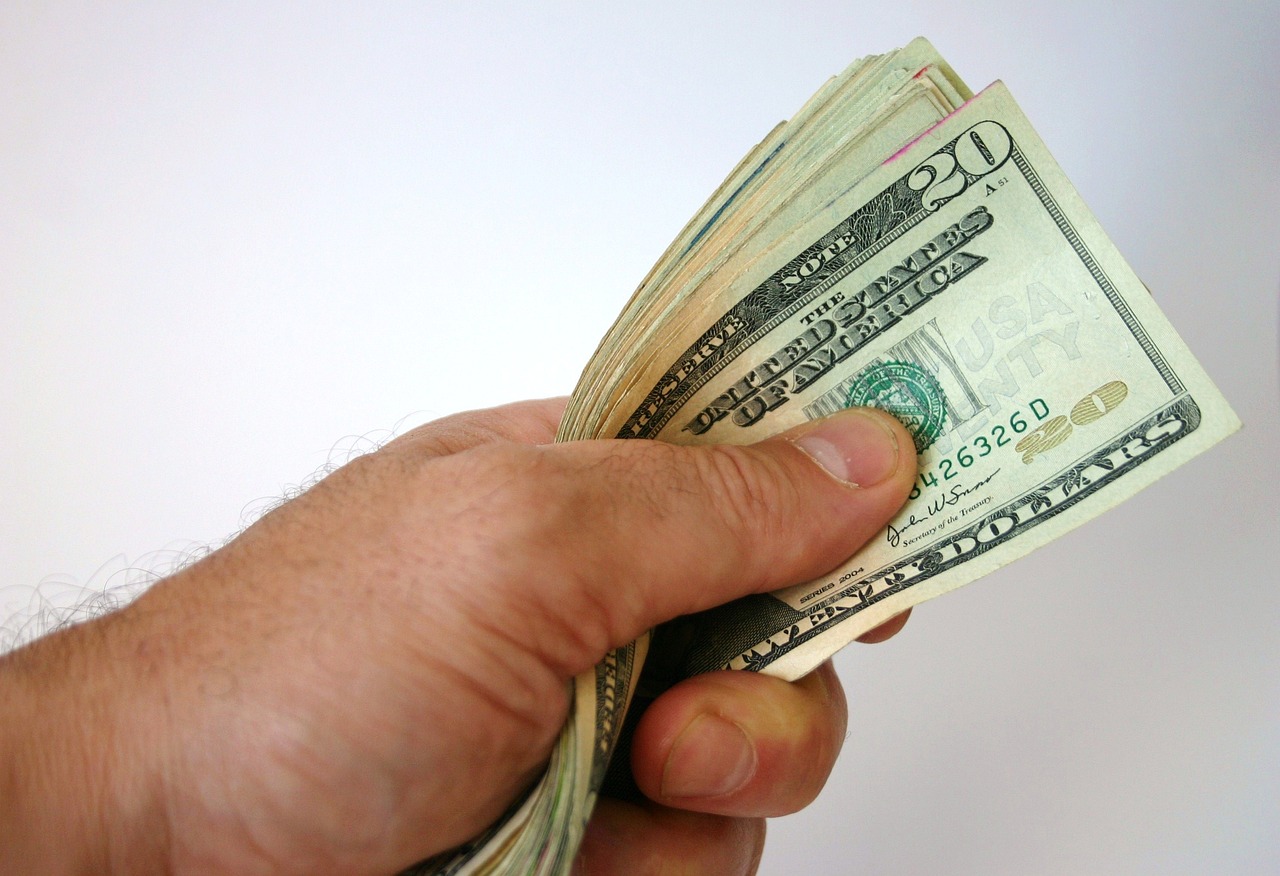USD-KRW Exchange Trends: Inflation, Interest Rates, Market vs Tourist Rates, and 2026 Predictions
GPT_Global - 2025-10-21 12:00:40.0 15
How can businesses hedge against changes in the USD–KRW rate?
In today's global economy, businesses dealing with international transactions often face risks due to fluctuating exchange rates. The USD-KRW (U.S. Dollar to South Korean Won) exchange rate is one such risk, particularly for businesses that remit funds between the U.S. and South Korea. Exchange rate volatility can affect the cost of remittances, making it challenging for businesses to predict expenses and profits accurately. However, there are strategies that businesses can use to hedge against this uncertainty.
One of the most common methods to manage foreign exchange risk is through forward contracts. These contracts allow businesses to lock in an exchange rate for a future date, effectively eliminating the risk of unfavorable rate fluctuations. Additionally, businesses can use options contracts, which provide the right (but not the obligation) to exchange currency at a specific rate, giving businesses flexibility while managing risk.
Another approach is using currency swaps, where businesses exchange a fixed amount of one currency for another, helping to mitigate risk over a longer period. By implementing these hedging strategies, businesses in the remittance sector can ensure more predictable and stable transactions, even in the face of fluctuating USD-KRW rates.

How does inflation in the U.S. affect the dollar-to-won exchange rate?
Inflation in the U.S. plays a major role in influencing the dollar-to-won exchange rate, which directly impacts international remittance costs and value. When inflation rises in the United States, the purchasing power of the U.S. dollar weakens, leading to potential fluctuations in the USD/KRW rate. For those sending money from the U.S. to South Korea, these changes can mean receiving more or fewer Korean won for the same amount of dollars.
As inflation increases, the Federal Reserve may raise interest rates to stabilize the economy. Higher interest rates often strengthen the U.S. dollar, making it more expensive for remitters to send money abroad. Conversely, if inflation slows and interest rates drop, the dollar may weaken, allowing recipients in Korea to receive more won per dollar transferred.
For remittance businesses, understanding these trends is crucial. By monitoring U.S. inflation data and exchange rate movements, money transfer companies can offer competitive rates, inform customers about optimal transfer times, and reduce currency conversion losses. Staying informed about U.S. inflation helps both senders and remittance providers make smarter, cost-effective financial decisions.
How has the won performed against the dollar in the last 10 years?
The performance of the South Korean won (KRW) against the US dollar (USD) over the last decade has shown fluctuations driven by various economic factors. Remittance businesses must stay informed about these currency trends, as they impact the value of money transferred across borders.
Over the past ten years, the won has experienced periods of strength and weakness against the dollar. Economic indicators such as trade balances, interest rates, and global market conditions have influenced these fluctuations. The won has appreciated during times of economic stability in South Korea, but it has also depreciated during global crises or when South Korea faces trade challenges.
For remittance companies, understanding these trends is crucial to optimize exchange rates for both senders and receivers. When the won strengthens, recipients may receive more value for their money, while a weaker won could result in less favorable exchange rates. By closely monitoring these shifts, remittance services can better serve their customers and stay competitive in a dynamic market.
In conclusion, the performance of the won against the dollar is an essential factor for remittance businesses. Staying updated on currency trends can help optimize service offerings and improve customer satisfaction.
What is the difference between the market rate and the tourist rate for 1 USD to KRW?
When sending money from the United States to South Korea, understanding the difference between the **market rate** and the **tourist rate** for 1 USD to KRW is crucial. The **market rate**, also known as the mid-market or interbank rate, is the real exchange rate used by banks and financial institutions when trading large amounts of currency. It reflects the most accurate and fair value of the currency in global markets. On the other hand, the **tourist rate** is the rate offered by money changers, airports, or remittance providers to retail customers. This rate includes a markup or service fee, meaning you get fewer Korean Won for every U.S. dollar exchanged. For example, if the market rate is 1 USD = 1,350 KRW, a tourist rate might offer 1 USD = 1,300 KRW after fees are applied. For anyone using a **remittance service**, checking whether the company uses the market rate or tourist rate can make a big difference in how much your recipient actually receives. Reputable remittance companies often use rates closer to the market rate, helping customers maximize their transfers and save on hidden currency exchange costs.How can I use a currency converter app to find 1 USD in won?
In today’s digital age, currency converter apps have become essential tools for individuals and businesses dealing with international transactions. If you're looking to find the equivalent of 1 USD in South Korean won (KRW), a currency converter app is the easiest way to get real-time exchange rates.
Simply open the app and input “1 USD” in the converter. Choose South Korean won (KRW) as the target currency. Within seconds, the app will display the current exchange rate, giving you an accurate value of 1 USD in won. These apps pull data from financial markets, ensuring the rates are up-to-date and reliable.
For remittance businesses, having this tool handy can enhance the customer experience by offering fast, reliable currency conversion. Customers can track the exchange rates for sending money abroad, helping them make more informed decisions and reduce unexpected costs when transferring funds. Currency converter apps are crucial for businesses seeking to stay competitive in the global remittance market.
Why might 1 dollar buy fewer won in some locations than others?
When sending money abroad, especially from the U.S. to South Korea, you might notice that one U.S. dollar buys fewer Korean won in some locations than others. This difference is mainly due to varying exchange rates set by banks, money transfer companies, and currency exchange services. Each provider adds its own margin or fee on top of the market rate, which affects how much won you get for each dollar.
Local demand and supply also play a role. In areas with high remittance traffic or frequent currency exchanges, providers may offer more competitive rates to attract customers. Meanwhile, remote or smaller outlets often have higher operational costs and lower transaction volumes, leading to less favorable rates.
For anyone sending money to South Korea, comparing exchange rates across different remittance providers can make a big difference. Using online money transfer services often results in better rates, lower fees, and faster delivery times. Always check the total amount your recipient will receive before confirming your transaction—every won counts when it comes to international remittance.
How do interest rates impact the USD to KRW exchange rate?
Interest rates play a critical role in the value of currencies, and the USD to KRW exchange rate is no exception. When the U.S. Federal Reserve raises interest rates, it often attracts foreign investments, boosting demand for the U.S. dollar. As a result, the value of the USD tends to increase relative to other currencies, including the South Korean Won (KRW). This means that remittance senders can expect to pay more in KRW for the same amount of USD when interest rates in the U.S. are high.
On the other hand, when the Federal Reserve lowers interest rates, the value of the USD typically decreases, as investors may look for higher returns elsewhere. This can result in a weaker USD against the KRW, making remittances from the U.S. potentially cheaper for recipients in South Korea. Remittance businesses must stay updated on interest rate changes to offer competitive exchange rates and cost-effective services for their customers.
In conclusion, interest rate fluctuations directly influence the USD/KRW exchange rate, impacting both remittance costs and the amount received by beneficiaries. By monitoring these changes, remittance businesses can provide better services to their clients.
What predictions exist for the dollar-to-won exchange rate next year?
As global markets face economic uncertainty, many experts are watching the dollar-to-won exchange rate closely. Predictions for next year suggest that the USD/KRW rate may fluctuate between 1,300 and 1,400 won per dollar, depending on inflation trends and interest rate decisions in both the United States and South Korea. Analysts anticipate that a stronger U.S. economy could push the dollar higher, while signs of South Korean economic recovery might strengthen the won.
For individuals and businesses involved in overseas remittances, these predictions are crucial. A higher dollar rate means more won for every dollar sent to Korea, making it a favorable time for remitters. On the other hand, a stronger won could reduce the amount received, encouraging senders to transfer funds early before rates shift.
Remittance companies recommend monitoring currency forecasts and using reliable transfer platforms to lock in favorable rates. By staying informed about the dollar-to-won outlook, customers can plan their international money transfers strategically, saving more on each transaction while ensuring faster and more secure delivery of funds.
About Panda Remit
Panda Remit is committed to providing global users with more convenient, safe, reliable, and affordable online cross-border remittance services。
International remittance services from more than 30 countries/regions around the world are now available: including Japan, Hong Kong, Europe, the United States, Australia, and other markets, and are recognized and trusted by millions of users around the world.
Visit Panda Remit Official Website or Download PandaRemit App, to learn more about remittance info.

